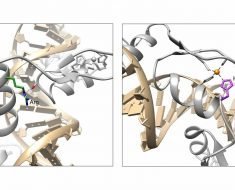Aging can be accompanied by cognitive deterioration that may affect life quality and possibly safety. EU research has developed a range of ICT solutions to support seniors with cognitive impairment who prefer to live as independently as possible.
The EU-funded H2020 IN LIFE project has developed and connected tools and systems for the elderly with various early cognitive impairments such as early and moderate dementia. Supporting home activities – communication, health maintenance, travel, mobility and socialisation tasks – the services are personalised to user needs.
The ultimate in personalisation
IN LIFE has developed a range of tools and systems for the dynamic adaptation and personalisation of services. Project coordinator, Dr. Maria Fernanda Cabrera explains, “This enables services to evolve together with the users’ health and condition. Tools to support dynamically changing conditions cover all aspects of independent living support.”
To help sort out appropriate regimes initially, the language behavioural prediction test is the screening tool used for sensing mild cognitive impairment conditions. This tool is self-administered and it was designed for people who have objective memory issues.
Programmes for all participants
An exercise programme to improve your fitness can be used at home or at the community care centre, TriviumMeulenbeltZorg, Almelo, the Netherlands. The exercises focus on strength, flexibility and balance, and are specifically designed to improve fitness. Each training session consists of a warming up, workout, and cooling down.
“As care workers are an integral part of the life of the elderly who live independently, tools for carers’ support have been developed,” Fernanda Cabrera says. For exercising, the online module aims to prevent falls and improve balance, strength, and flexibility.
Pilots guide IN LIFE evolution
To highlight best practices for relevant business and financial models for their application, six pilots were successfully conducted to ensure viability. More than 2 900 users participated in the baseline or treatment phases in Greece, Spain, Netherlands, Sweden, Slovenia and the United Kingdom.
Different sites enabled testing in varying environments by taking advantage of the know-how of each site. Prior to the tests, training was given to the participants with the project tools.
For the users of most sites, there was an increase in the mini–mental state examination score, a widely used test for cognitive function. Accompanied by a significant decrease in the negative range of the positive and negative affect scale for measuring emotional functioning, these results were statistically significant. “Together with the informal caregivers’ burden that decreased, the pilots showed very positive and encouraging outcomes,” stresses Dr. Cabrera.
All types of users favoured the functionalities offered by the applications. The possibility of continuous monitoring and communication between elderly user-caregiver through IN LIFE was also very appealing to all users.
Impact on society and the financial implications
Differences between two successive conditions were used to calculate the quality of life (QALY) in years at pilot and project level. As an example, the highest QALY, living one year in full health, can be compared with 0.5, the score for being bed-ridden. Overall, QALY increased with the IN LIFE regime. The use of the project platform and the services for the entire population was beneficial and improved their quality of life and the overall QALY index was significantly high.
From an economic viewpoint, the IN LIFE system offers mature services tested in real-life applications in the six sites Europe-wide. Moreover, results from the trial sites show the business scenarios for care centres and indicate that the exploitation opportunities are sustainable. Use of the open cloud platform and seamless interconnection of all the services carries with it the advantage of being low-cost to run and maintain. Furthermore, the system can be accessible anywhere and doesn’t need high computing capacity.
Source: Read Full Article





